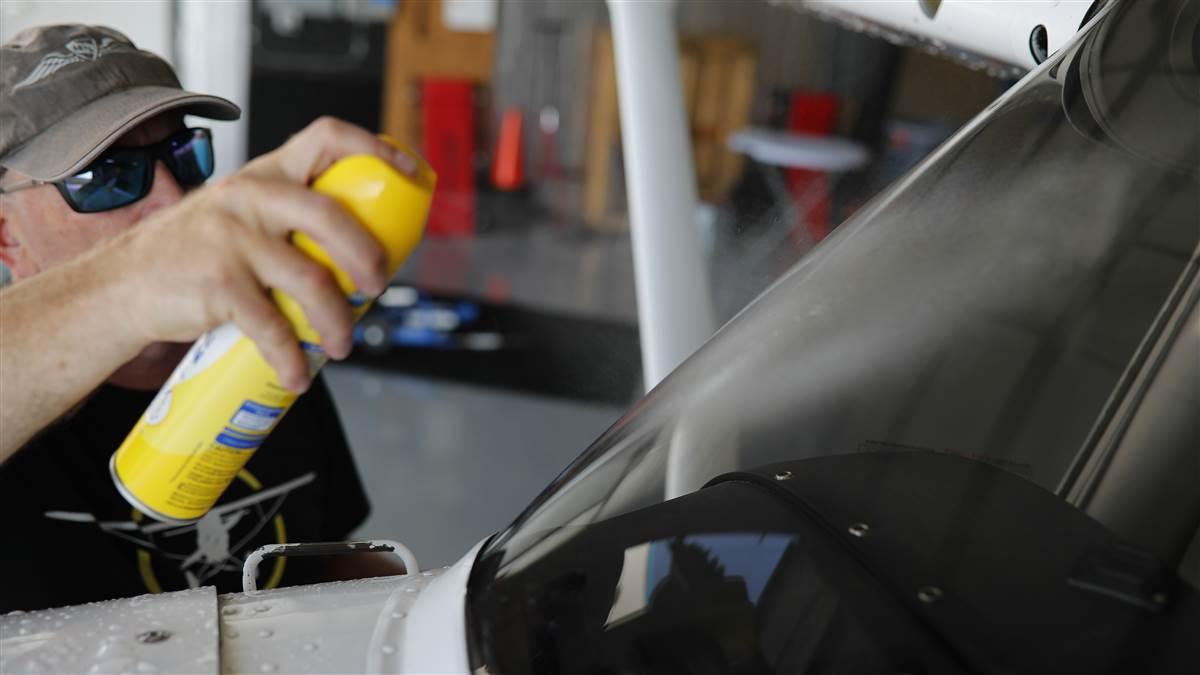
Cleaning an airplane is an essential part of aircraft ownership. If you don’t own an airplane, there are still benefits to be had from making the effort. Some flying clubs will offer free flight time in exchange for elbow grease. Perhaps the most important benefit, according to AOPA Editor at Large Dave Hirschman: Discrepancies are more likely to be found by pilots and technicians who touch every part of an airplane while washing it.
Cleaning an airplane can be a sweaty, time-consuming chore or a session of pure Zen, allowing you to focus on nothing more important than scrubbing grime and bugs from aluminum. Begin your session by assembling the correct cleaning products so that you’re not tempted to grab whatever’s lying around.
 1. Airframe and powerplant mechanic Jeff Simon recommends covering the pitot tube and static ports to protect them from water and debris, and flagging these areas with bright-orange banner tape lest you forget about them. Warm water and a cloth can be used to remove most insects and bird excrement from the leading edges and fuselage.
1. Airframe and powerplant mechanic Jeff Simon recommends covering the pitot tube and static ports to protect them from water and debris, and flagging these areas with bright-orange banner tape lest you forget about them. Warm water and a cloth can be used to remove most insects and bird excrement from the leading edges and fuselage.
2. Clean the wings, fuselage, and belly with an airplane-friendly cleaner. Don’t use Simple Green All-Purpose Cleaner, which may promote corrosion if left too long on some metal surfaces. Fortunately, there’s Extreme Simple Green for aircraft, as well as other specialty cleaners.
 3. Using warm water and your hand, clean insects and smudges from the airplane’s windows. Follow up with an application of cleaner designed for Plexiglas (not glass). Use a soft cloth. A chamois is better than an old T-shirt. Never use paper towels, which can scratch plastic.
3. Using warm water and your hand, clean insects and smudges from the airplane’s windows. Follow up with an application of cleaner designed for Plexiglas (not glass). Use a soft cloth. A chamois is better than an old T-shirt. Never use paper towels, which can scratch plastic.
4. Follow up with wax or Pledge furniture polish on the paint to give it a shine and help minimize the next round of bugs. Pledge can be used safely on windows, as well. Remember to remove coverings and tape from pitot tube and static ports.
 5. Now, go fly your freshly cleaned airplane. Did you pick up a half-knot of airspeed?
5. Now, go fly your freshly cleaned airplane. Did you pick up a half-knot of airspeed?



